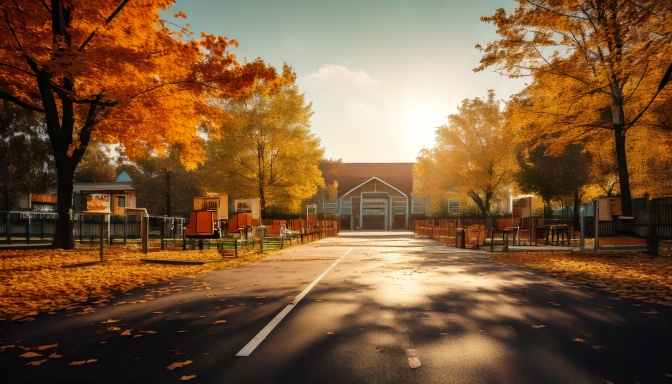Introduction
Driving through school zones requires more than just slowing down it demands full attention, caution, and respect for young pedestrians, Every day, children walk, bike, or get dropped off near schools, and it’s every driver’s duty to ensure their safety.
In this guide, we’ll explore everything you need to know about school zones :
the posted speed limits, when to stop for school buses, and the serious consequences of ignoring these important rules. Whether you’re a new driver or need a refresher, mastering school zone awareness is critical for responsible driving.
🗂️Table of Contents
1- What Is a School Zone?
A school zone is a designated area around schools where traffic laws are more strictly enforced, These zones are marked with signs, flashing lights, or road markings to alert drivers to slow down and watch for children.
2- Why Are School Zones Important?

Drivers must be particularly alert in school areas because children can behave unpredictably, They might cross the road mid-block, chase a ball, or exit a vehicle suddenly, This is why school zone traffic laws are strict, Slower speeds allow drivers to respond quickly and stop safely if needed, School zones also reduce the severity of potential crashes.
Children are more vulnerable near roads, especially during school hours, They may cross suddenly, walk between cars, or be distracted. Slower speeds and strict enforcement reduce accidents and save lives.
3- School Zone Speed Limits Explained
It’s important to adjust your speed well before entering the zone, Flashing yellow signs and pavement markings are cues to slow down, Many jurisdictions use automated speed cameras in school zones, especially in high-risk areas, Even going 5 mph over the posted school zone limit can result in expensive fines.
Speed limits in school zones typically range from 15 to 25 mph (25–40 km/h) depending on the country or region, They are enforced during school start and end times and whenever children are present.
4- When Do School Zone Rules Apply?
Some school zones are active only during specific hours, while others are enforced whenever children are present, This includes weekends, after-school events, or summer programs, To be safe, always reduce speed whenever you see children near or crossing the road, regardless of the time.
Look for signs indicating when reduced speeds are required, Some zones have flashing lights or posted hours, In general, always slow down when you see children, even if it’s outside posted hours.

5- How to Identify a School Zone
Watch for yellow school signs, pavement markings, speed limit reductions, and crossing guards, Some zones also have flashing beacons to signal active school hours.
6- What to Do Near Crosswalks and Drop-Off Zones
Watch for kids exiting buses or parked cars, Parents and school staff may also be directing traffic, Follow their instructions and stay off your phone, Use extra caution when backing out of driveways near schools or parks during the school day.
Yield to pedestrians at all crosswalks, Never pass another vehicle stopped for pedestrians, Be patient during school drop-off and pick-up times, and obey all signs and crossing guards.
7- Stopping for School Buses : What the Law Says
When a school bus stops with flashing red lights, all traffic in both directions must stop (unless divided by a physical barrier), Remain stopped until the lights turn off and the bus begins moving again.
8- Common Violations (and Their Consequences)
– Speeding in a school zone
– Failing to stop for a bus
– Ignoring crossing guards
– Blocking crosswalks
Penalties can include heavy fines, points on your license, license suspension, and higher insurance rates.
9- Safety Tips Every Driver Should Practice
Avoid eating, texting, or adjusting your navigation while in a school zone, Give yourself extra time during morning commutes if your route passes a school, Always check both directions for small pedestrians before proceeding, especially when making turns at school zone corners.
– Reduce distractions while driving
– Scan sidewalks and corners for children
– Never rush through a school zone, even if late
– Use extra caution during poor visibility (rain, fog, etc.)
10- Teaching New Drivers About School Zones
Use real-life examples to show teens how to react to buses, crossing guards, and unpredictable pedestrians, Include school zones in their practice routes, Teach them to recognize key traffic signs like ‘School Speed Limit When Flashing’ or ‘No Passing School Bus’ signs and explain the consequences of ignoring them.
Make school zone awareness part of driving lessons, Teach new drivers how to identify signs, obey bus laws, and stay alert, Good habits formed early can prevent serious accidents later.
Conclusion
Following traffic laws in school areas isn’t just about avoiding tickets it’s about creating a safer community, When drivers slow down and remain alert, kids can walk to and from school without fear, Small changes in driving behavior around schools lead to fewer injuries, less stress, and a stronger sense of safety for everyone.
School zones exist for a reason to protect the most vulnerable members of our communities, By slowing down, staying alert, and following the law, you help ensure every child gets to and from school safely. Whether you’re driving once a day or every day, make school zone safety a permanent habit.
📌 Internal Link :
How to React Safely to Emergency Vehicles
🌐 External Source :

